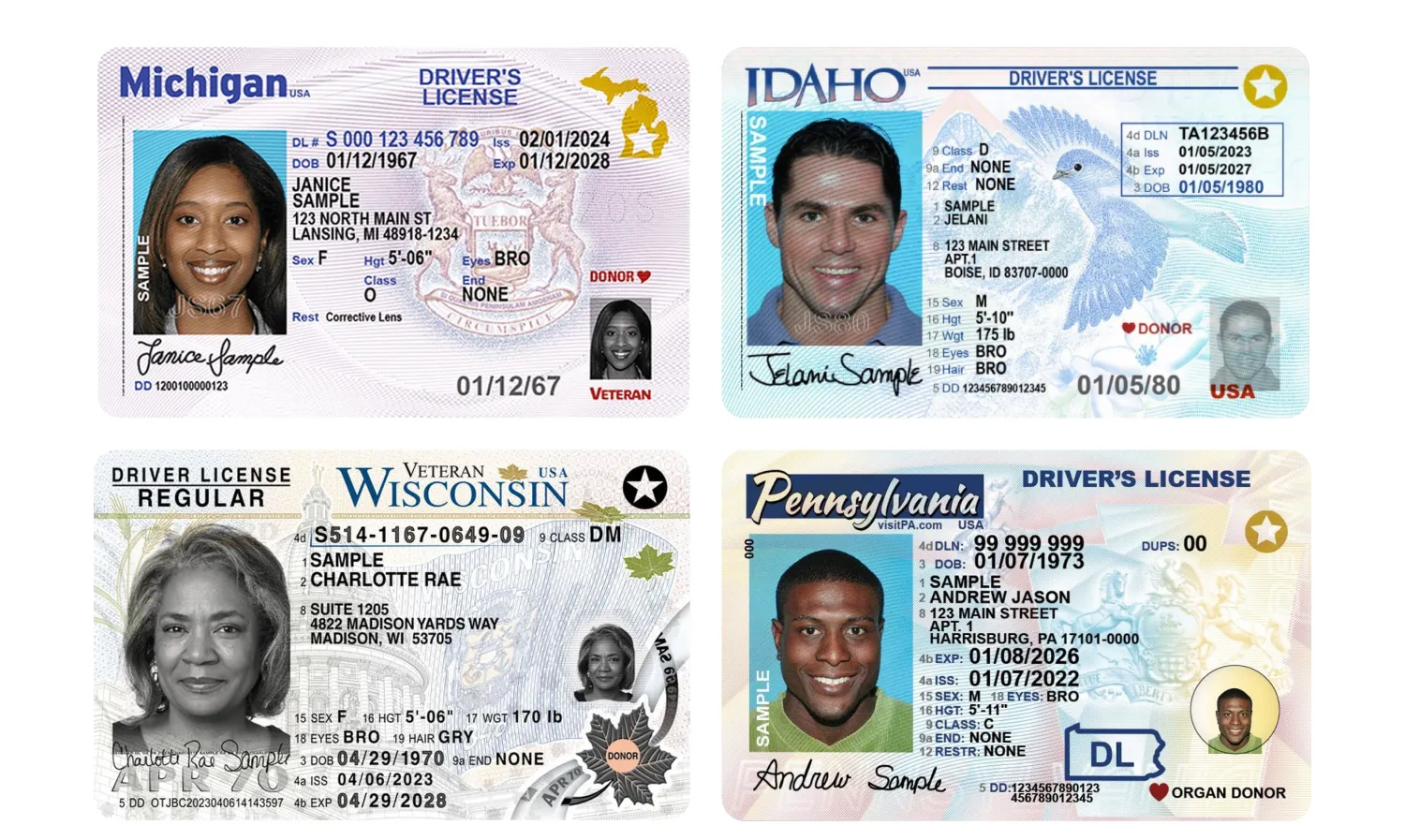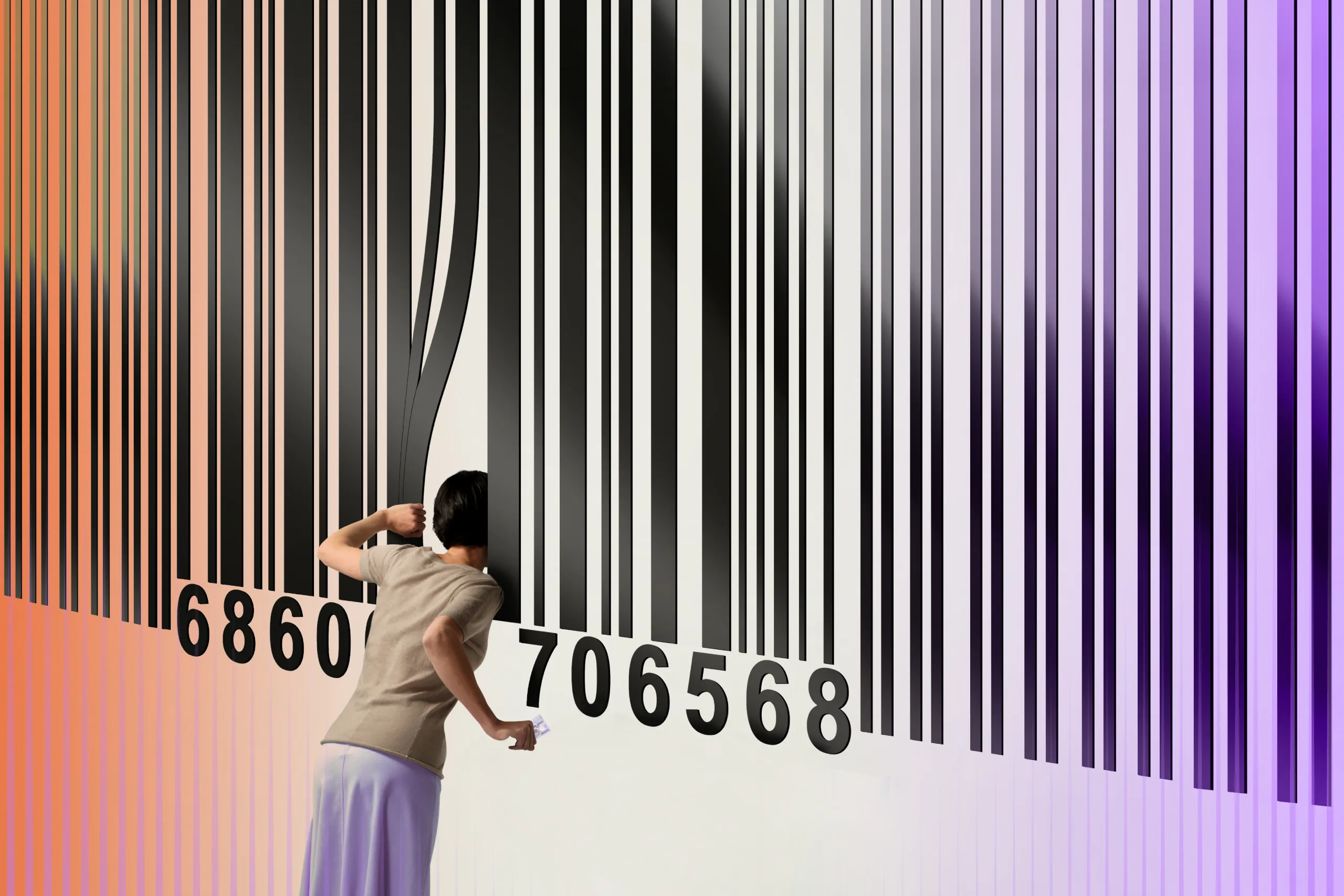Asking for a driver’s license is one of the most common ways to verify someone’s identity or age. In the US, more people have driver’s licenses than passports: 227 million versus 160 million.
Unfortunately, criminals like faking driver’s licenses too.
In this post, we’ll provide you with a step-by-step roadmap for implementing effective driver’s license verification in your organization.
💡Curious about other ID documents and what makes them unique?
Read our expert reviews of:
Types of driver’s licenses
First off, it’s essential to decide on what types of driver’s licenses you need to verify. By “types,” we mean the technology and process used to issue a document. It shouldn’t be confused with classes or categories, which refer to the kinds of vehicles a person is licensed to drive.
The type will define the verification method, so it’s better to consider this in advance. Currently, there are three types of driver’s licenses in circulation:
Traditional physical driver's licenses
This is the oldest group, which includes physical documents. Most often, they now come as photo cards, which are basically plastic cards with the holder's photo and personal details. Paper-printed licenses, while increasingly rare, are still in circulation in European countries, as well as Brazil, Chile, Hong Kong, and others.

Latvian, Monegasque, and Brazilian driver’s licenses
How to verify. Traditional driver’s licenses are the most vulnerable type, so the ideal scenario for verifying them involves physical examination with the help of special document readers to confirm authenticity. These devices allow you to inspect the document under UV or other light sources to reveal hidden security features unseen by the naked eye.
In remote scenarios, you need to make sure your solution can verify document liveness, including the presence of dynamic security features such as OVI, MLI, or holograms. This is the best workaround available now to ensure that the user submits an actual document, not a manipulated scan.
Key steps include:
Checking the visual resemblance of the portrait in a driver’s license and its presenter to make sure it really belongs to that person;
Confirming the document is valid upon presentation;
Checking for security features like barcodes, holograms, watermarks, microprinting, and others;
Reading data from barcodes, magnetic strips, and machine-readable zones;
If possible, inspecting the document under UV or other light sources to reveal hidden security features.
Electronic driver’s licenses
Electronic documents contain an embedded electronic NFC chip similar to those found in modern passports. The chip stores all personal information in electronic form, as well as biometric information like fingerprints. All the info is protected by an electronic signature.
Despite the bullet-proof security of electronic documents, electronic driver’s licenses are rare. The Netherlands, Egypt, Mongolia, and Tajikistan are among the few countries that actively use them.

Dutch electronic driver’s license
How to verify. Verification of electronic driver’s licenses involves both traditional methods—just as with physical driver’s licenses—and chip authentication. The latter includes two things:
Reading chip data: Accessing and comparing personal data from a chip (including biometrics) with other sources in a document.
Chip authentication: Verifying the integrity of the chip, its data, and the validity of signing certificates.
From the user’s perspective, chip verification is almost unnoticeable—they just scan the document with an ID document reader or NFC-enabled smartphone just like they would do with a traditional document.
On the technical side, the device sends a radio signal to the chip to activate it. Then, the chip “replies” with the requested information. It takes seconds, and you can see the results via the application you use.
💡 Electronic documents, such as electronic driver’s licenses, are currently considered to be the most secure. If you operate in sensitive regulated areas, such as Banking, it may be mandatory to only accept electronic documents.
Read also: EBA Guidelines on the Use of Remote Customer Onboarding Solutions: How Regula Aligns
Digital driver’s licenses or mobile driver’s licenses
A digital driver’s license (dDL) or a mobile driver’s license (mDL) both refer to a secure version of a driver's license on a user’s smartphone. The terms are sometimes used as synonyms, but in fact, they aren’t the same thing.
Digital driver’s licenses are more like digital copies of physical documents rather than full-fledged alternatives. They replicate the physical card’s details and may include additional features such as real-time updates.
Mobile driver’s licenses are a type of digital ID. They come as mobile apps that replace a physical document that's no longer being issued. In 2021, the International Standard Organization released ISO 18013-5, the standard for the mobile driving license. Given this fact, the chances are that mDLs will completely squeeze out dDLs over time.
mDLs aren’t very widespread yet, as their implementation requires significant structural changes. Among the countries that currently issue mDLs are the US (some states) and Australia. However, these digital forms of identification are likely to become more prevalent and widely accepted with time.

Colorado was the first US state to adopt mDLs. Apple, being a co-author of the standard, already supports mDLs natively in their Wallet.
How to verify. Information from a mobile driver's license (mDL) is verified using public key cryptography, a system that uses a pair of digital keys. The verifier engages the mDL with an mDL reader, verifies the license using its public key, and retrieves the necessary data. This data can be obtained directly from the holder’s smartphone or from the issuing authority via a server.
The advantage of this document type is that it allows you to share only the data you choose to provide, rather than everything at once, as is the case with a regular document. For example, a bartender or cashier will not know your name or where you live when verifying your age.
Get posts like this in your inbox with the bi-weekly Regula Blog Digest!
Typical elements and security features of driver’s licenses
Driver’s licenses include a variety of fields that contain personal information in the rather limited space of a handheld card. These fields are usually read using Optical Character Recognition (OCR) technology, which converts images into editable and searchable data. The standard fields include:
Full name
A photo of the license holder, which is crucial for visual identification
Secondary photo
The holder’s birth date, used to verify age
Issue and expiration dates
License number
Barcode
In the case of electronic driver’s licenses, an embedded RFID chip replicates all personal data from a visual zone, plus contains the document owner’s biometric data.
Given the fact that it’s a driver’s license, there are also indications of the driver’s category or document class. These categories and classes are often country-specific. For example, the US—boasting one of the widest ranges of types—has such types as DLs for under 18 and under 21-year-old drivers. In Japan, driver’s licenses are color-marked depending on driving skills: newbies get a document with a green stripe, while seasoned drivers who have had no violations within the past five years can get a gold-striped DL.
Driver’s license categories may also have specific validity periods, which can differ depending on the country and from the overall issue and expiration dates of the document itself. This information is crucial for rental businesses to ensure that only authorized drivers can rent vehicles. Similarly, transport companies need to verify that drivers meet specific requirements, and insurance companies must assess drivers based on their experience.
Driver’s license formats
If you operate globally, you might need to address an additional challenge. The issue is that there’s no single universally accepted driver’s license template worldwide.
Moreover, in countries such as Australia, Canada, Ethiopia, India, Mexico, Micronesia, Pakistan, United Arab Emirates, United States, and Yemen, each state within the country has its own design of driver’s license.
Effective verification implies the capability to instantly recognize the document and validate not only the data, but also whether this data is written in compliance with the format of the particular document.

While the fields are the same, the design and layout are totally different from state to state
How to implement automated driver’s license verification
Implementing automated driver’s license verification can streamline your processes and enhance security. We'll use Regula's solutions as an example, but the principles can be applied to other similar systems as well.
On-site driver’s license verification
For on-site verification at places like police stations or banks, you’ll need document readers. These devices capture and analyze all forms of IDs, handling authentication, verification, and validation. They come in various types, including kiosks, desktop workstations, and portable handheld devices for fieldwork.
Document readers usually come with specialized software that processes the captured data. This software reduces manual work by extracting all the data, including the data from barcodes and machine-readable zones, and transferring it right into your system. Plus, it instantly verifies and cross-checks similar data from different sources, highlighting any issues.
Upgrade existing hardware
If you already have document readers but are unsatisfied with their verification capabilities, consider upgrading to Regula’s software. Regula’s solutions are compatible with the most popular document reader models, and provide enhanced accuracy and reliability.
To get up and running with a workflow involving document readers, you need to:
Choose the model that fits your needs. Quite often, you don’t need the most powerful one, so it’s better to analyze your typical use cases and book a consulting session with a trusted vendor (by the way, Regula’s experts are always happy to help with this sort of task);
Install on all customer touchpoints;
Enjoy increased productivity and improved security by automating manual document processing.
Remote driver’s license verification
For remote verification, Regula offers Regula Document Reader SDK, which can be integrated with your existing mobile or web applications. This SDK enables the app to capture and process images of driver’s licenses, verifying their authenticity and extracting the necessary data.
The next time you need to verify your users’ or clients’ identity or age, they can simply scan their driver’s licenses with a smartphone, and they are ready to go. Behind the scenes, the software instantly identifies the document type, extracts all the necessary information, verifies the document, and confirms whether its presenter is eligible to use your services.
Among the most important features for effective driver’s license verification are:
Support of NFC chip verification to verify electronic documents;
A wide range of supported documents to handle virtually any type of driver’s license from any country, state, etc.;
Ability to validate and cross-check the data within a document;
Document liveness verification—to make sure the user presents a real document, not any sort of scans or screenshots;
Support for the most popular platforms—desktop, iOS, and Android—as users should be able to submit their documents using any device they have.
By integrating Regula Document Reader SDK in your app, you get all these capabilities, enhancing your current workflow.
Verify driver’s licenses with Regula
Employing technologies in your identity verification workflows is essential to staying secure yet competitive in terms of UX. Regula helps you do exactly that.
Our solutions are designed to handle various verification needs, including NFC support for reading electronic driver’s licenses, and advanced liveness checks to ensure the document and the presenter are genuine. Thanks to the support of driver’s licenses from over 230 countries and territories worldwide, you will be able to verify virtually any document in existence.
Whether you're just starting or looking to scale globally, Regula’s expertise in identity document verification can guide you every step of the way. Our team is here to support you, from initial implementation to full-scale deployment.
As always, don’t hesitate to contact us if you have any questions or feedback—we’d love to hear from you.





